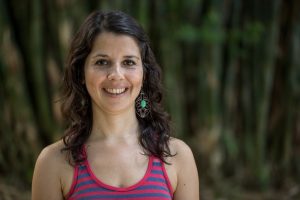Ana Yranzo is one of our newest EDGE Fellows, who will soon be starting her project focused on Orbicella corals in Venezuela. We asked Ana to write this blog to introduce herself, her project, and what an EDGE Fellowship means to her.
What is Orbicella?

My name is Ana Yranzo from Venezuela, and the sea and coral reefs are my passion. My interests are the conservation biology, ecology and taxonomy of corals, sponges and octocorals. I work as a researcher at the Institute of Tropical Ecology and Zoology at the Central University of Venezuela and I have been diving for scientific expeditions for many years.
My interest in reefs began when I started diving at 16 years old. A few months after my first dive in Morrocoy National Park a mass mortality event occurred, killing almost 90% of the corals and other invertebrates there. This really impacted me! And although my first few years of diving were purely recreational, I was always interested in learning more about this amazing ecosystem following this event.
I recently became a Segré EDGE Fellow, and this has given me the opportunity to coordinate a project for the first time! My project aims to protect the most important reef-building corals from the Caribbean region: Orbicella, in one of the most important national parks of my country, Morrocoy National Park. The title of my EDGE project is ‘Orbicella status two decades after the massive death, Morrocoy, Venezuela‘.

Morrocoy National Park is located in the western part of Venezuela. This park used to be one of the most important coral systems on the continental coast of Venezuela. Until 1996, this site had the highest diversity and coral abundance of the Venezuelan coast, but a mass mortality event killed 90% of the benthic fauna. Orbicella annularis, O. faveolata and O. franksi were the most important reef builders in the park and although they were affected, there are still surviving colonies.
The Morrocoy National Park adjoins with the RAMSAR site, Cuare Wildlife Refuge. These two protected areas have exceptional mangrove forests, seagrass meadows and coral reefs with a biodiversity that is resistant to disappearing. This project will give us the opportunity to learn the current status of the most important coral species of the Morrocoy coral system and, with it, the chance to develop conservation strategies to protect them.
Because of its coastal condition, this site is also the source of economic sustenance of many people from nearby towns, whose main activities are tourism and fishing. This dependence of the human population makes the reef very vulnerable to human impact, so the protection strategies are very important to guarantee the conservation of the National Park ecosystems.
Ana Yranzo studied Environmental Studies and has a Masters in Biological Sciences from Simon Bolivar University, Venezuela. She works at the Institute of Tropical Ecology and Zoology at the Central University of Venezuela where she is a researcher in basic, natural and applied sciences, in the Laboratory of Aquatic Organisms. Ana has been diving for scientific expeditions for many years.
She has also been involved in projects with non-governmental institutions, and participated in projects with environmental consultancies as part of Environmental Impact Assessments. Her research has been presented at several national and international congresses and scientific meetings.

